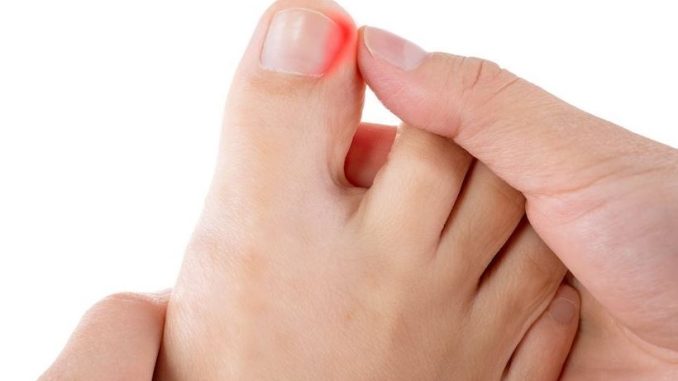
Ingrown toenails can be not only painful but also quite bothersome. They occur when the edge of a toenail grows into the surrounding skin, leading to irritation, redness, swelling, and discomfort. While seeking medical attention from a podiatrist or doctor is recommended in severe cases, there are several steps you can take to address a painful ingrown nail at home. In this article, we’ll guide you through the process of managing and treating an ingrown toenail without professional medical intervention.
1. Soak Your Foot
One of the initial steps to relieve pain and reduce swelling associated with an ingrown nail is to soak your foot in warm, soapy water. Here’s what to do:
- Fill a basin or a foot spa with warm water.
- Add a few drops of mild liquid soap to the water.
- Soak your affected foot for 15-20 minutes, ensuring the ingrown nail is fully submerged.
The warm water softens the skin and nail, making it easier to address the ingrown portion.
2. Gently Lift the Nail Edge
After soaking your foot, gently try to lift the edge of the ingrown nail away from the skin. Use a clean, disinfected pair of tweezers or a nail file to carefully lift the nail.
Do not force the nail or use excessive pressure, as this can worsen the condition or lead to an infection.
3. Place a Small Cotton Ball
Once you’ve lifted the ingrown nail edge slightly, insert a small piece of sterile cotton or dental floss under the lifted nail edge. This helps keep the nail elevated and prevents it from growing further into the skin.
4. Apply Antibiotic Ointment
Apply a thin layer of over-the-counter antibiotic ointment to the affected area to reduce the risk of infection. Make sure the area is clean and dry before applying the ointment.
5. Bandage the Toe
Cover the affected toe with a sterile bandage or adhesive bandage to keep the cotton or dental floss in place and to protect the area from dirt and bacteria.
6. Change Dressings Regularly
It’s essential to change the cotton or dental floss and reapply the antibiotic ointment and bandage daily. This helps maintain cleanliness and promotes healing.
7. Wear Comfortable Footwear
Choose shoes that provide adequate room for your toes, reducing pressure on the ingrown nail. Avoid tight-fitting shoes or high heels during the healing process.
8. Maintain Good Foot Hygiene
Keep the affected area clean and dry. Avoid wearing damp socks or shoes, as moisture can exacerbate the condition.
9. Avoid Aggravating Activities
Try to refrain from activities that may put additional pressure on the ingrown nail, such as running or participating in high-impact sports, until the condition improves.
10. Pain Management
Over-the-counter pain relievers like ibuprofen or acetaminophen can help alleviate pain and reduce inflammation associated with the ingrown toenail.
Warning: When to Seek Professional Help
While home remedies can be effective for mild cases of ingrown toenails, it’s crucial to seek professional medical attention if you experience any of the following:
- Signs of infection, such as increased redness, swelling, warmth, or pus discharge.
- If you have diabetes or a compromised immune system.
- If the pain and discomfort persist or worsen despite home treatments.
- Recurrent ingrown toenails.
In severe cases, a podiatrist or doctor may recommend a minor surgical procedure to remove a portion of the ingrown nail or, in some cases, the entire nail.
Conclusion
Managing a painful ingrown toenail at home can provide relief and promote healing when the condition is mild. However, it’s essential to practice caution and seek professional medical advice if you encounter signs of infection or severe discomfort. Remember that good foot hygiene, proper nail care, and wearing comfortable shoes can help prevent future ingrown toenails.
Share this:
- Click to share on Facebook (Opens in new window)
- Click to share on Twitter (Opens in new window)
- Click to share on WhatsApp (Opens in new window)
- Click to share on Reddit (Opens in new window)
- Click to share on Telegram (Opens in new window)
- Click to share on Pinterest (Opens in new window)
- Click to share on LinkedIn (Opens in new window)